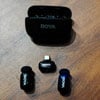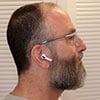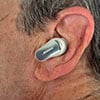We may earn commissions when you buy from links on our site. Why you can trust us.
Nothing Headphone vs. Sony XM6: Surprising Wins and Clear Trade-Offs
Nothing, the company known for its eye-catching transparent Android phones, recently launched its first over-ear headphones, creatively called the Nothing Headphone (1). And a few weeks earlier, Sony, an industry leader in the premium headphone community, launched its own premium headphones – the WH1000-XM6. With two premium headphones launching so close to each other, we decided to put them to the test against each other. I've been testing the Sony WH1000-XM6 headphones for about six weeks, and I've been testing the Nothing Headphone (1) for about three weeks, and here's how they stack up against each other.
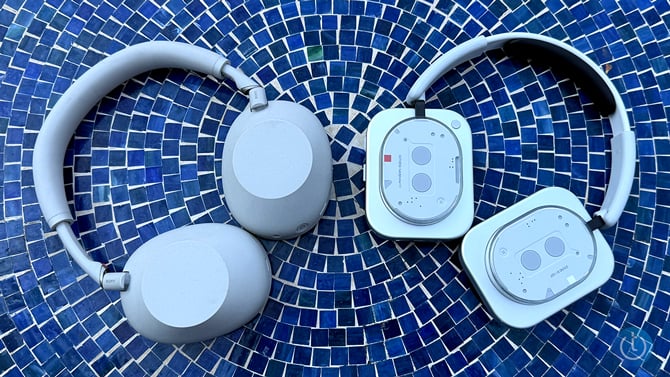
The Sony WH1000-XM6 are on the left and the Nothing Headphone (1) is on the right.
Design: Goes to Nothing
If there is a clear category where these two differ, it's in the design. Nothing is a design-forward company, and has been since its inception. That is very clear in the Nothing Headphone (1), which retains Nothing's legacy of clear construction, showing off "internals", most of which are decorative. Of course, whether you like the design or not is entirely subjective — there is no right or wrong answer, but suffice it to say the design is very distinctive. Personally, I don't mind rocking a little style and standing out.
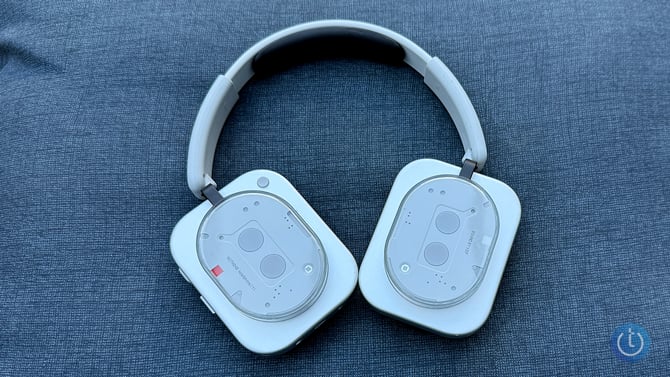
On the other hand, Sony's design of the WH1000-MX6 headphones is borderline boring. Put simply, the Sony XM6 headphones look a lot like the XM5s. But more than that, the headphones look extremely generic. If you typed "Generic headphones" into ChatGPT, you'd see a photo of the Sony headphones. If you want a set of cans that stands out, go with Nothing. If you want to blend in, Sony is the way to go.
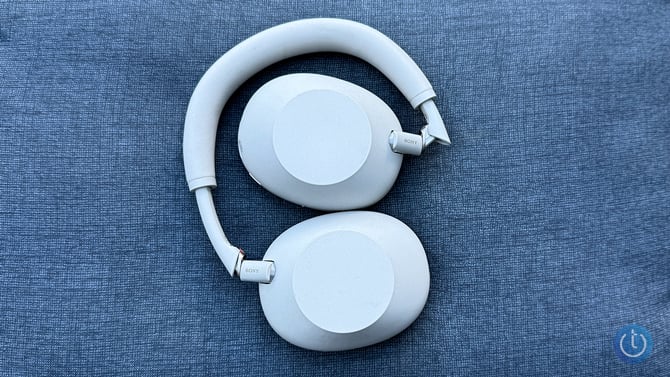
Another design issue is distinguishing between the headphones' right and left earcups. The Nothing Headphone (1) has a red square on the outside of the right earcup and a white square on the left. The Sony headphones have an orange marker on the hinge of the right earcup, making them easy to identify when folded, but otherwise invisible. The Sony headphones also angle their ear cups so that the headband rests naturally on the top of the head, making it a little easier to tell which is which without looking.
Controls: Goes to Nothing
Both sets of headphones come with a complete set of controls to adjust and control your media. With both sets, you can play/pause media, skip forward and back, adjust volume up and down, and change/turn on/turn off your ANC, but they both go about it in different ways. The Sony WH1000-XM6 headphones have a touch-sensitive pad on the right earcup, allowing you to intuitively swipe up and down to adjust the volume, swipe back and forth to skip/go back, and double-tap to play or pause. You can also cover the entire cup with your hand to lower the volume and activate ambient mode (so you can hear your surroundings). This is particularly useful when you're on an airplane or ordering coffee and have to temporarily speak with someone. The left earcup on the Sony headphones has an ANC button and the power button.
Meanwhile, on the Nothing Headphone (1), there are a number of different controls all over the right earcup to adjust various settings. There's a button used to switch between media sources, a paddle to skip music forward and back, and a roller that you swipe forward and back to adjust volume, press to play/pause, and long-press to turn on/off ANC. The Nothing Headphone (1) solves a big pain point for headphones by including a dedicated Bluetooth pairing button. The killer feature, though, is that with the Nothing X app, you can change any of those controls to do anything you want: They're your headphones, control them how you want. This is an easy victory for Nothing in this category.

Comfort: Tie
The Sony and Nothing headphones are designed for long-term wear. During my testing, I wore both headphones for hours at a time while sitting at my computer and working. I generally used them to listen to music, though I also paired the Sony headphones to my computer for audio when watching videos, etc. I also wore both sets of headphones on a recent trip from Chicago to London, which involved several hours on a plane. I wore the Nothing headphones on the way there and the Sony headphones on the way back. Both are extremely comfortable long-term.
Noise Cancellation: Goes to Sony
There are two types of noise cancellation for headphones. There's passive isolation, which is basically how well the headphones keep out sound. Then there's Active Noise Cancellation (ANC), which uses an external microphone to detect sounds and generates an inverse wave that eliminates the sound. ANC is best for eliminating constant sounds, like airplane engines, box fans, and other things like that.
The Nothing Headphone (1) has good passive isolation, but I'd rate the ANC as pretty good, but not great. Meanwhile, the Sony headphones go the other way with decent passive isolation and excellent ANC.
One thing I noticed during the plane trip was that when eating, the Sony headphones moved with the chewing motion of my jaw. Each bite caused the ear cup pad to lift slightly from the side of my head, breaking the sound isolation. The Nothing Headphone (1) did not do that. The squishier ear pad was able to maintain the seal around my ear, which I appreciated greatly. This one is a close battle, but I'm going with Sony just because the ANC is excellent.

Audio Quality: Goes to Sony
As for the overall sound, which is arguably why we buy headphones in the first place, it's not much of a contest. The Sony WH1000-XM6 headphones offer exquisite sound for the entire spectrum. When listening to these headphones, I hear tones that I simply don't hear with other headphones. The sound is great, and I love it.
The Nothing Headphone (1) has its own unique sound signature that was tuned by KEF, which is an English audio group. Out of the box, I didn't like the sound that the Nothing Headphone (1) produced at all. Music sounded hollow and overemphasized the midrange. Fortunately, the Nothing X app has an eight-band equalizer that you can adjust to suit. I found a pretty good setting (which the headphones save when connecting from device to device), but overall, there’s no question that Sony gets the nod in this category.
The Win
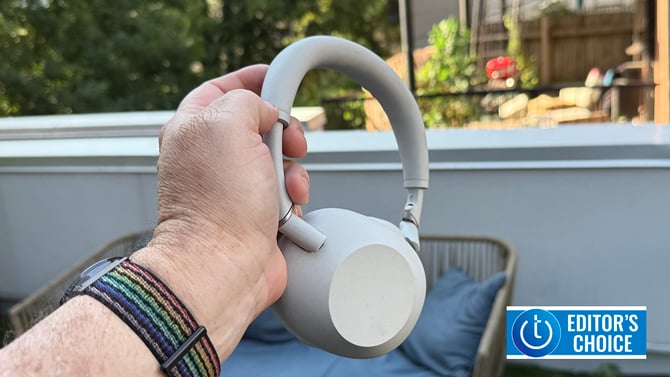
While the Nothing Headphone (1) makes a good showing, taking two categories and tying two categories in my comparison, the Sony manages two of the most important victories. Sony wins the categories based on sound, which is literally the primary job of a pair of headphones. If you asked me to pick a set of cans to wear full-time, it would be the Sony WH1000-XM6s ($449) – even taking into account the fact that they cost $150 more than the $299 Nothing Headphone (1).
[Image credit: Adam Doud/Techlicious

